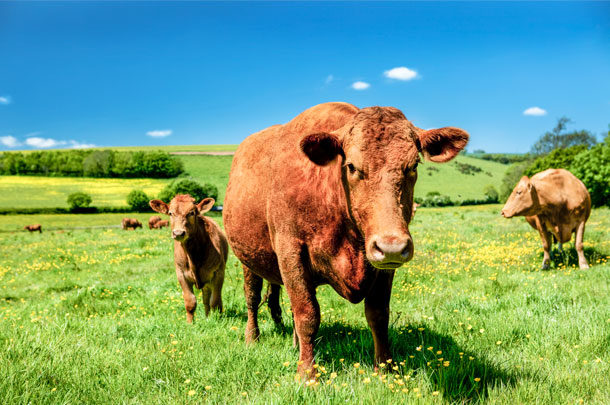Weeds come in all shapes and sizes, and many folks have a hard time figuring out what weed they have in their field. If you do not know what you are dealing with, you can’t take the best course of action.
I’m a big fan of Weeds of the South by Charles Bryson and Michael DeFelice for our area. There are a slew of phone apps as well that will help in the identification process (ID Weeds, Pl@antNet, etc.). Proper weed identification will help you make well-informed decisions about what weeds you have and how to control them.
A warmer, wetter year
Overall, 2018 was the second wettest year on record for many portions of Georgia (and other areas of the country), with some parts of the state getting 30-plus inches over the 30-year average rainfall (Figure 1).
To add to this, 2018 was also warmer than the average year. These two environmental conditions made it a great year for those weeds that lay dormant in the soil from previous seasons. The old adage is “one year of seeding equals seven years of weeding,” so proactive management is critical to avoid headaches down the line.

Identifying weed problem areas
Weeds are opportunistic and look for areas where other plants do not do as well. A strong stand of forage is your greatest tool to combat weed issues.
Manage your stand accordingly through liming, fertilizer, and do not overgraze. Areas where weeds take hold are going to be in overgrazed pastures, low-lying areas where water pools and collects, roadways into and through pastures, field edges, ditch banks and areas around ponds or creeks.
In years like last year where there is significant wet, forage stands were damaged due to equipment and animal traffic, flooding, etc. These areas should be reseeded to encourage forage regrowth and prevent weeds from taking hold.
Weeds that prefer wet conditions
There are a couple of ways to control weeds that prefer wet areas: culturally and chemically. Typically, cultural practices can take care of many weed issues, but often, it’s the combination of cultural and chemical that does the trick.
Again, a strong stand of forage is your greatest tool to combat weed issues. If your field has improper drainage and there are areas of constant wet, fix the drainage issue first, then utilize other means of control.
Sedges
Yellow and purple nutsedge prefer wet areas and can be persistent from year to year due to underground tubers. Many folks refer to these weeds as “nutgrass,” although they are technically not grasses. These weeds are sneaky because they look like grass but are difficult to control. Animals prefer not to graze them and do not like the seedheads. Consistent mowing can reduce the number of tubers produced, and applications of imazapic (Impose, Panoramic) or sulfosulfuron (Outrider) can do a good job controlling these species.
Foxtails
Foxtails are particularly bad in wet years as they often move into voids in pastures where hay has been fed, or soil disturbed due to equipment or animal movement. Foxtails can injure mouths of animals due to prickly awns.
Annual foxtails (green, yellow and giant) can be controlled with the early application of pendimethalin (Prowl) prior to emergence and can be controlled with imazapic or nicosulfuron + mesosulfuron (Pastora) after emergence. Knotroot foxtail (a perennial foxtail) is difficult to control, and additional research for chemical and cultural controls is under investigation.
Japanese stiltgrass
This species prefers wet, wooded areas and is likely to be problematic around field edges. They can cause issues with drainage due to producing large mats of grass. They are prolific seed producers and can be very shade tolerant.
The best means of control for this species is removing the wet conditions and using spot treatments of glyphosate or imazapic when young and newly emerged. Pendimethalin before emergence reduces the numbers of plants that will emerge.
Buttercup
Buttercup can be problematic in overgrazed fields or when there are weak winter or fall stands. It is a species that can be toxic to livestock, but is not a preferred forage and is usually avoided. Mowing these plants prior to flowering greatly reduces seed production.
Herbicides are also an option, as this species can be controlled with 2,4-D, dicamba, triclopyr (PastureGard), metsulfuron (Cimarron) or 2,4-D + aminopyralid (GrazonNext). Care should be taken when applying products containing 2,4-D or dicamba, as these can volatilize and move off-target, damaging sensitive crops.
Summary
- A strong stand of forage is your greatest tool to combat weed issues.
- Identify problem areas, fix the problem and then use chemical controls.
- Get your pre-emergent herbicides out early before problematic weeds emerge.
- Apply post-emergence herbicides when weeds are small.













